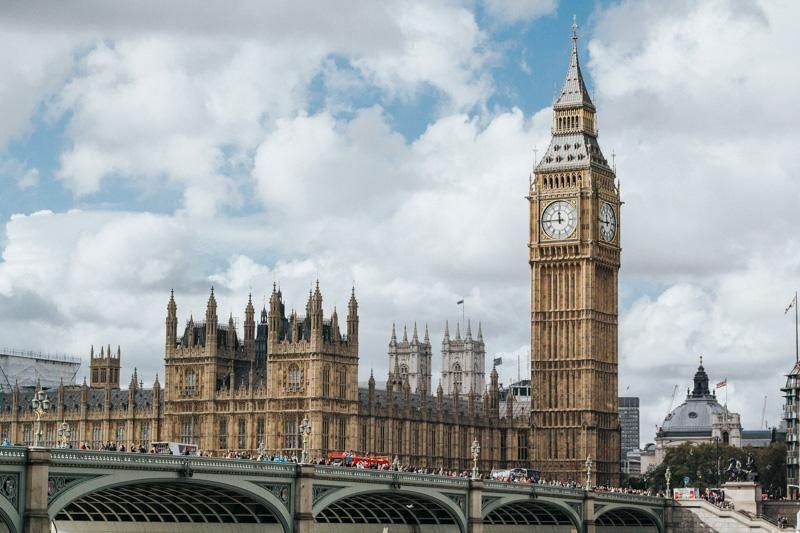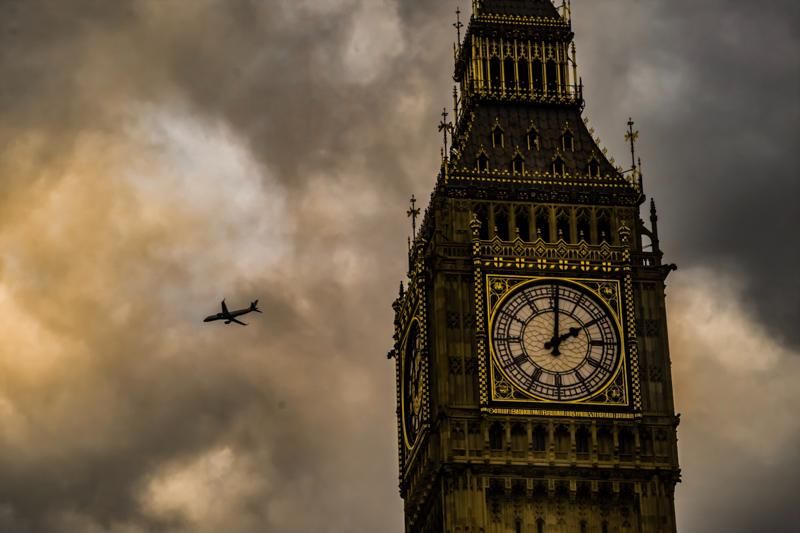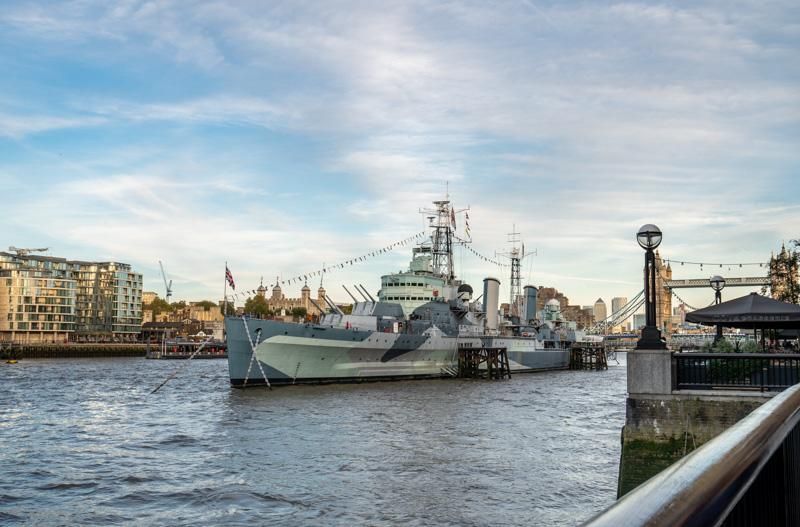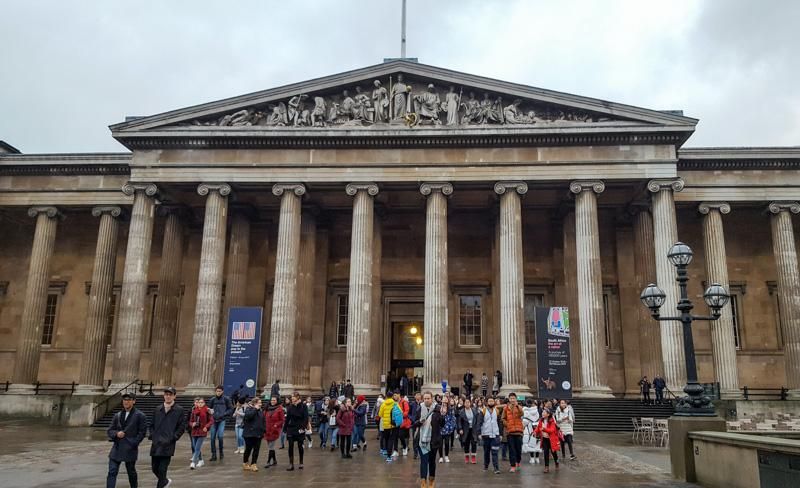London is definitely one of the must-see cities in the world. This diverse city has a lot to offer for any type of travellers including history, culture, entertainment, unique experiences, shopping and food.

I have lived in London for more than 8 years and I still discover new activities or events every day. London can be overwhelming if you are travelling from a small city or town.
You can easily spend days exploring London without getting bored and always be able to find something new in the city.
If you only have 4 days in London, you only have time to scratch the surface, but you can still learn about the history of the city and enjoy your time here. In this article, I will highlight the top things to do and see in 4 days in London for first-timers.
Read also: 28 Best Days Trips From London
What to Do in London for 4 Days
Day 1: Westminster and nearby
Westminster Abbey
Begin your first day with a trip to Westminster Abbey, a must-see on every traveller’s wish list. It does not matter if you are a history lover, an architecture fan, or none. Westminster Abbey will not cease to enthral you.
The royal coronation church of London and a world heritage site, Westminster Abbey has been around for more than a thousand years. When you pop in, make sure you visit the Lady Chapel with its majestic fan-vaulted ceiling, get a glimpse of the Coronation Chair, and check out some of the most impressive tombs of poets and royal family members. More than 3,000 famous Britons lied buried at Westminster.

Westminster Abbey is open from Monday – Saturday and usually has long queues. So, we would highly recommend buying an online ticket which is also cheaper than the ones at the abbey.
Dean’s Yard and Westminster School
Once done at the abbey, take a little detour to your south to savour some more history. You will get to the Westminster School and the Dean’s Yard that occupy the site of the former monastery of Westminster.
The Westminster School is one of the oldest public schools in England. And Dean’s

Yard features a large lawn surrounded by cast-iron lamp posts – a perfect example of Collegiate Gothic architecture. You can spot some historical buildings in the vicinity such as the Headmaster’s House and an archway that gives you a glimpse of Little Dean’s Yard.
Houses of Parliament
A short 10-minute walk from Westminster will take you to the Houses of Parliament, another must-do on your London bucket list. Officially known as the Westminster Palace, the Parliament is where the House of Commons and the House of Lords meet.
You can take audio or guided tours of the Houses of Parliament.
There is also an option to couple it with an afternoon tea. If you are keen, you can attend common debates in the Westminster Hall and Prime Minister’s question time from public galleries. Make sure you check the schedules online and book your tickets well in advance.
Big Ben
When you are in Westminster, there is no way you can miss seeing the famous clock tower of the Parliament – the Big Ben! Also known as the Elizabeth Tower, this iconic monument was named the Big Ben because of a massive bell inside it.
Big Ben is one of the most photographed monuments of London. But, this iconic tower is under construction and it looks a bit different from the pictures you have seen.

Tours to the Big Ben have been suspended at the moment because of ongoing restoration work. The Big Ben has been covered with scaffolding until 2021. Click here to find the latest on Big Ben restoration.
Churchill War Rooms
You can take a 10-minute walk from the Parliament to arrive at the Churchill War Rooms, an underground complex that played a crucial role in shaping the course of World War II. Winston Churchill, with his close aides, made some key decisions here.
With your admission ticket, you can tour the Cabinet War Rooms and the Churchill Museum, and discover what it was to live and work undercover for years. You can also take a private tour if you like for deeper insights.
10 Downing Street
A little further away is 10 Downing Street or “number 10”, the official residence and workplace of the British Prime Minister. The front door of number 10 is one of the most photographed doors in the history of Britain.

However, nowadays you cannot get very close to it because of security reasons. But you can always take a sneak peek through those iron gates from Whitehall.
Tate Britain
After having a look at the much-coveted black door, we suggest you head to Tate Britain for an extensive collection of British art. This is a great place to learn about historic, modern, and contemporary British art.
Entry to Tate Britain is free for everyone. The museum is open Monday – Sunday between 10 am – 6 pm. You can linger around longer on the first Friday of every month when the Tate is open till 9:30 pm.
Day 2: Tower Bridge and nearby
Tower of London
On your second day, head to the famous (or infamous!) Tower of London on the northern bank of River Thames. The Tower of London is a royal castle that has been used as a fortress, a royal residence, and even a gory prison in the thousand years of its existence. Many aristocrats, members of the clergy, and royals including the famous Queen Anne Boleyn were imprisoned and executed here.

Reserve at least a couple of hours for your visit because there are lots to see. You can admire the Crown Jewels on display, explore the Medieval Palace, visit the Bloody Tower, take a Yeoman Warder tour, and say hi to the famous ravens that have lived here for a long time. Queues are unbearably long. So, make sure you book your tickets online.
Tower Bridge
The Tower Bridge on River Thames is one of the most famous landmarks of Britain and it is easy to see why it is so unmissable. Two Victorian Gothic towers connected by walkways and blue and white metallic suspensions make the bridge extremely photogenic.

The Tower Bridge is something you would not want to miss taking a picture of. And what luck if a bridge lift is scheduled on the very day you visit. Maybe you could plan your visit in a way so as to coincide with the bridge lift times. Being able to witness the Tower Bridge lift is an experience to cherish forever.
HMS Belfast
After a pleasant walk across the Tower Bridge, turn right and walk a few minutes to arrive at the museum ship called HMS Belfast. HMS Belfast was the most powerful cruiser in the Royal Navy and played a central role in the Second World War.

You can explore all 9 decks of HMS Belfast and find out how things worked on the cruiser. Check out the boiler and engine rooms much below the sea level. As you pass by the doctor’s room, a bakery, and the laundry, you can imagine how life would have been on board.
Borough Market
Very close by is the Borough Market of London – a famous food market in London. Being around since the 11th century makes it one of the oldest. Back then, there was only the London Bridge to cross the River Thames and Borough Market sat at one end of it. That is why it is so historically important.
Today, you can buy and eat just about anything in the world at the Borough Market. Fresh produce, cooked food, baking delights, and cured meats – you name it and Borough Market will have it for you.
The Shard
The Shard is a 95-storey skyscraper located only a stone’s throw away from the Borough Market. It looks like a shard of glass which is how it gets its name. It is one of the most impressive modern structures dotting the London skyline.

You can climb up the Shard to get some sweeping views of the city 800 feet above the city. The Shard is open 7 days a week from 10 am – 10 pm. Book your tickets online before you go.
Cruise Dinner on River Thames
Since you are so close to the river, end your day with an elegant dinner cruise on the Thames. Just sit back and relax as you sail the calm waters and see London lighting up. Enjoy some delicious food and wine aboard one of the best Thames dinner cruises and watch the world go by.

Day 3: Buckingham Palace and nearby
Buckingham Palace
On the third day, start off at the majestic Buckingham Palace, the official residence as well as the governing headquarters of UK’s monarch since 1837. This is the “Home of The Queen”. The palace has 775 rooms many of which are open to visitors for 10 weeks every summer.
On a tour of the State Rooms, you can look inside the Throne Room, the Ball Room, a wonderful picture gallery, and the magnificent White Drawing Room. At the Royal Mews, you can view many antique coaches and royal bogies, a few of which are used even today by the family.

Plan your trip to see the spectacle called Changing of the Guard in which one regiment takes over from another. For times and other details, check out the Buckingham Palace website. At the end of your tour, you can also visit the Buckingham Gardens very well-known as the venue of the Queen’s garden parties.
Victoria Memorial
Right in front of the Buckingham Palace is the Queen Victoria Memorial that commemorates the death of Queen Victoria in 1901. The monument is 82 feet tall and features impressive statues of the queen and various angels. It is definitely worth a stop for a memorable picture from London.
St. James Park
After walking a few minutes to the southeast, you will arrive at St. James Park, one of the oldest and loveliest parks in the city. It is one of the eight royal parks of London. Plan to spend some time here to simply stroll through the paved paths, click extremely Instagrammable pictures with beautiful flower beds, enjoy stunning views of the lake and fountain, and have a chat with the resident pelicans. Yes, pelicans have lived in St. James Park for more than 400 years now!

Admiralty Arch
Designed by the famous English architect, Sir Aston Webb, the Admiralty Arch is one of the most recognizable monuments of London. It is located at the northeastern end of The Mall and is easily reachable from the Buckingham Palace.

The Admiralty Arch was built by King Edward VII to honour the death of Queen Victoria in 1912. Today, it plays an important role during royal ceremonies by letting processions to pass through. What is rather famous about the arch is the peculiar, humanlike nose on one of the arches which many tourists try to spot.
Trafalgar Square
Right next to the Admiralty Arch is the famous Trafalgar Square, one of the most happening places in London. This square is definitely a must-visit on every London trip.
Apart from being home to the majestic Nelson’s Column, Trafalgar Square is also the venue for many cultural events throughout the year. Some of the more popular ones are Christmas carol-singing in December and St. Patrick’s Day Festival in March. In close proximity of the square are famous buildings such as the Somerset House and the National Gallery.

Coca Cola London Eye
End your day by riding the giant wheel in the heart of London and a getting a bird’s eye view of the city. The Coca Cola London Eye is one of London’s most visited attractions.
Even though some people might tell you that the Eye is not worth it, we would encourage you to go and check out those 360-degree views. And enjoy a 30-minute ride of pure bliss. London Eye opening times may vary through the year. Please check the times and purchase your tickets on the Official Coca Cola London Eye website before planning your day.
Day 4: British Museum and St. Paul’s
British Museum
On your last day of London sightseeing, you can begin your day at the remarkable British Museum located in the Bloomsbury area of London. The British Museum is one of the most impressive museums in the whole world. It is massive and houses a large collection of art and historical artefacts from around the world. Almost 8 million articles on display! Simply ambling through all those galleries could you take you a couple of days.

However, if you are short on time (because there’s so much to see in London), make sure you include the highlights in your British Museum itinerary. The Rosetta Stone, the Parthenon Marbles, a huge collection of Egyptian mummies, and the Standard of Ur are some of them. And don’t forget to get some really awesome pictures of the museum’s Great Hall.
Entrance to the British Museum is free for everyone. If you are keen about special events and exhibitions, check out their official website before going.
Covent Garden & Red Phone Booths
A 10-minute walk from the British Museum will take you to Covent Garden, London’s famous shopping and entertainment district.
There are tons of things to do in Covent Garden including theatres, bars, restaurants, and shopping streets. Neal’s Courtyard is full of colourful window frames and charming cafes.

There are always very cool decorations in the area which makes it a perfect place for photographers looking for inspiration. The London Transport Museum is also close by if you wish to take a quick peek.

If you are looking for the famous red phone booths in London, you will find them here by a lane called the Broad Court. A ballerina sculpture right in front of a row of red booths makes the street very photogenic.
King’s College
After getting some great pictures of yourself with those adorable red booths, head straight to the prestigious King’s College in London. It was established in 1829 by King George IV and is one of the top universities in the UK today.

Some of its notable alumni include Peter Higgs, Florence Nightingale, and Desmond Tutu. Even though you cannot take a visitor’s tour of the college, you can surely stand here a moment and appreciate the architectural genius that is reflected off each and every corner of the building.
St. Paul’s Cathedral
St. Paul’s Cathedral is another iconic British landmark located on the strategic Ludgate Hill that has housed places of worship since ancient times. The cathedral that stands today is more than 300 years old and is open to visitors. The dome is believed to have been inspired by St. Peter’s Basilica in the Vatican.

You can take a tour of St. Paul’s Cathedral floor and the Crypt, the Geometric Staircase, and the Chapel of St. Michael & St. George. By walking up 257 steps, you can get to the Whispering Gallery at the base of the dome. And on the topmost level is the Golden Gallery from where you can get really stunning views of London.
Millennium Bridge
In front of St. Paul’s Cathedral is the attractive London Millennium Footbridge. It was nicknamed the Wobbly Bridge by Londoners right after its opening because of a scary swaying motion that caused the bridge to be closed for a few days. It no longer sways but the nickname held on.
The best part about the bridge is not the bridge itself but an impressive view of St. Paul’s Cathedral’s southern façade from the bridge. A beautifully framed St. Paul’s makes for the perfect photograph.
Sky Garden
At the end of your fourth day, head to London’s highest public garden – the Sky Garden on Fenchurch Street. The Sky Garden is spread over three floors and a viewing gallery on the 43rd floor offers ultimate free views of London city from the top.

Plus, you can see some really exotic plant species from the Mediterranean and the south of Africa. Entry is limited. Therefore, you need to book your free visit ahead of time to be assured of entry.
This post contains affiliate links and if you click one I may receive a small commission at no extra cost to you.




